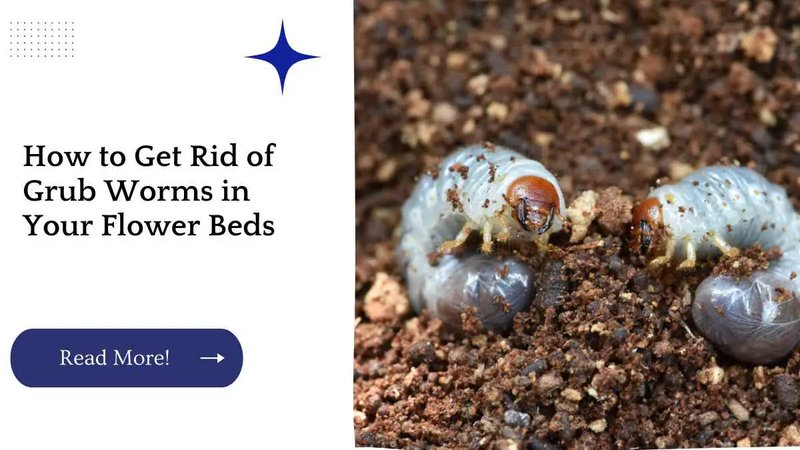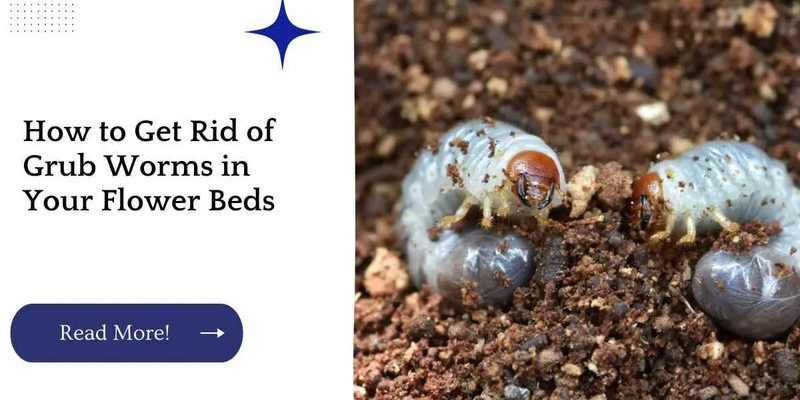
Grub worms, often the larvae of beetles, might sound unassuming at first. But these tiny creatures can wreak havoc on your flower beds if they’re left unchecked. Think of them like that sneaky friend who keeps eating the snacks at game night; you enjoy having them around, but when the chips start to disappear too quickly, it’s time to take action. In this article, we’ll dive deep into what grub worms are, the damage they can cause, and how you can protect your flower beds from potential harm.
What Are Grub Worms?
Grub worms are the larvae of various types of beetles, such as June bugs and Japanese beetles. Initially, they appear as little, white, C-shaped creatures that can grow up to an inch long. You usually find them in the soil, where they thrive in warm, moist conditions. They feed on the roots of plants, including flowers, grass, and even vegetables.
Here’s the thing: while they may look harmless, grub worms can cause significant issues for your garden. They have voracious appetites and can quickly destroy the root systems of your plants. Imagine trying to support a beautiful flower bed that’s losing its foundation. Without healthy roots, your flowers won’t get the nutrients they need to thrive.
Understanding the life cycle of these little pests helps too. Grub worms develop through several stages, beginning as eggs laid in the soil. Once they hatch, they start feeding right away, often leading to the destruction of roots. If you have a garden in a warm climate, it’s especially crucial to keep an eye out for these unwelcome guests.
How Do Grub Worms Damage Flower Beds?
The damage grub worms can inflict on your flower beds is quite concerning. When they feast on roots, the plants struggle to absorb water and nutrients—think of it as trying to run a marathon with a backpack full of bricks. The results can be wilting plants, stunted growth, and, in severe cases, total plant death.
You might notice some telltale signs that grub worms are causing problems in your garden. For starters, if your flowers are wilting or turning yellow, it could be a direct result of root damage. Sometimes, the soil might even feel soft or spongy where the roots have been eaten away.
Moreover, the presence of grub worms can attract other pests and predators. Birds, for instance, love to snack on these larvae, and they might flock to your garden in search of a meal. While nature has its balance, this can lead to a host of additional complications—like nests being built in your flower beds, further disrupting the area.
How to Identify Grub Worms in Your Flower Bed
Spotting grub worms might not be as easy as finding a bright flower in full bloom, but there are a few visual cues you can look for. Start by inspecting the soil. If you gently dig a little, you might unearth these C-shaped larvae hiding just beneath the surface.
Additionally, checking the health of your flowers is key. If you’ve noticed that some plants are wilting or showing signs of stress without an apparent cause—like lack of water—make sure to check for grub worms. They might be the sneaky culprits eating away below the ground.
Lastly, if you see any “pockets” of dead grass or flowers in your flower beds, it could indicate that something is not right below. Grub worms tend to create patchy areas, especially if their population is high. You’ll want to address potential infestations quickly to prevent further damage.
Preventing Grub Worm Infestations
Preventing grub worms from invading your flower beds is always easier than dealing with an established population. One of the best ways to keep them at bay is through good lawn and garden practices. Start by maintaining a healthy flower bed, as robust plants can better withstand any potential damage.
Another effective preventive measure is to keep your garden soil healthy. Frequent watering and ensuring good drainage will help promote strong root systems. You might also want to consider adding beneficial nematodes to your soil; these microscopic worms feed on grubs, providing a natural way to manage their population.
It’s also a good idea to practice crop rotation in your flower beds. By changing up the plants you grow from season to season, you can disrupt the life cycles of pests like grub worms and reduce their chances of establishing a home in your garden.
Treating Existing Grub Worm Problems
If you discover a grub worm infestation, don’t panic! There are several effective ways to treat the problem. Start by using natural remedies like **diatomaceous earth**. This powdery substance is safe for your plants but can be lethal to grub worms, as it damages their exoskeletons, causing dehydration.
Another option is to introduce beneficial insects, such as **nematodes** or birds, to your garden. These natural predators will help keep grub worm populations in check. You might also consider applying specific grub treatments available at garden centers. Always follow the instructions carefully, as you want to protect your lovely flowers while effectively dealing with the problem.
Finally, practice vigilance. After treating your garden, frequently check for grub worms to ensure they don’t come back. This ongoing care can determine whether you have a thriving flower bed or one that keeps getting disrupted by pesky worms.
In summary, grub worms can indeed be harmful to flower beds if left unchecked. They may seem small, but their impact can be significant, leading to wilting plants and patchy gardens. By understanding what grub worms are, how they cause damage, and how to prevent and treat infestations, you can keep your flower beds flourishing.
So, the next time you tend to your garden, remember to check for signs of these little intruders. With a little vigilance and care, your flower beds can remain healthy and vibrant, free from the harm of grub worms. Happy gardening!

